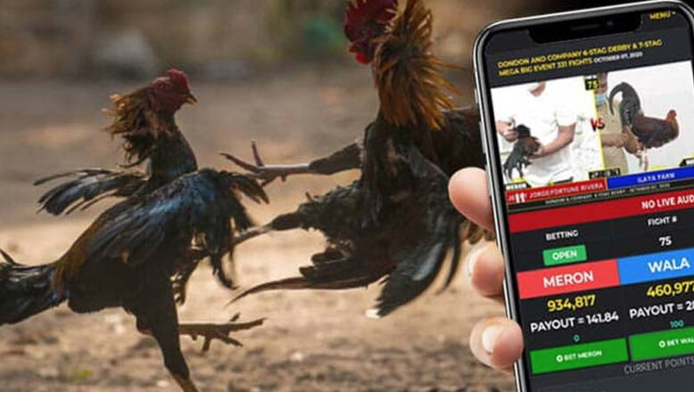Lessons Gained From a Sabong Grandmaster: Building a Winning Mindset
Lessons Gained From a Sabong Grandmaster: Building a Winning Mindset
Blog Article
Keys of the Sabong Grandmaster: Mastering the Art of Cockfighting
The detailed world of cockfighting, specifically as practiced by the Sabong Grandmaster, uses a fascinating research study in the assemblage of animal habits, training methodologies, and competitive method. To truly comprehend the subtleties of this art form, one should discover how the Grandmaster balances the physical and emotional elements of fowl training while browsing the ethical considerations intrinsic in this traditional practice. What are the essential understandings that divide the extraordinary from the common in this world? Recognizing this could redefine one's perspective on the sport and its professionals.
History of Cockfighting

As the centuries advanced, cockfighting spread throughout different continents, adapting to social dynamics and neighborhood custom-mades. In medieval Europe, it got popularity amongst the nobility, who concerned it as a display of riches and status. By the 17th century, the sporting activity had developed itself in England, leading to the development of defined policies and regulations.
In the Americas, especially in the Caribbean and the Philippines, cockfighting took on special characteristics influenced by colonial histories and aboriginal practices. Today, while the sport continues to be controversial and deals with lawful challenges in numerous areas, its historical importance remains to spark discussions concerning pet rights, social heritage, and social worths. The evolution of cockfighting shows more comprehensive motifs of human interaction with nature and the complexities of custom.
Recognizing Fowl Behavior
Understanding rooster habits is essential for those involved in the sport of cockfighting, as it directly influences performance, health, and training. Roosters exhibit a range of behaviors that can indicate their physical and mental states. Significantly, hostility, territoriality, and social pecking order play considerable functions in their attitude.
Aggressiveness is an all-natural reaction in fowls, mostly driven by the requirement to assert dominance. Observing interactions among fowls can disclose their chain of command, which is vital for managing their atmosphere. A confident rooster presents a much more assertive pose, while a submissive one may reveal indicators of anxiety or worry, such as crouching or avoiding eye contact.

Training Methods for Champions
Efficient training techniques are critical for developing champ roosters that master the competitive sector of cockfighting. A systematic strategy guarantees that each bird reaches its complete potential, integrating physical fitness with mental stamina.
To start, establishing a constant training routine is important - Sabong Grandmaster. This consists of day-to-day exercises that boost toughness, agility, and endurance. Routines might entail controlled sparring sessions with both online and fabricated challengers to imitate competition, allowing roosters to refine their combating abilities in a safe environment
Integrating agility drills, such as challenge training courses and leaping workouts, significantly improves a rooster's physical abilities. Furthermore, presenting diverse surface areas and surfaces can boost their flexibility throughout battles.
Psychological training needs to not be overlooked. Familiarizing the birds with the sounds and sights of a competitive environment can reduce stress and anxiety on fight day. Furthermore, positive reinforcement techniques, such as rewarding preferable actions, can infuse self-confidence in the fowls.
Lastly, preserving a calmness and assertive visibility throughout training sessions promotes depend on between the fowl and the trainer, vital for accomplishing optimal performance. With each other, these methods develop a comprehensive training regimen that grows champions ready to master the sector.
Health And Wellness and Nutrition Basics

Incorporating a mix of corn, wheat, and barley offers needed carbs, while healthy protein resources such as fish dish, soybean dish, or pests sustain muscle development and recovery. Additionally, incorporating fresh fruits and vegetables can improve the general nutritional profile, providing antioxidants that increase the immune system.
Hydration is equally essential. Access to clean, fresh water should be a priority, as dehydration can seriously impact performance (Sabong Grandmaster). Normal wellness exams are necessary to keep track of for any More hints kind of potential health problems or bloodsuckers that can endanger a fowl's problem
Moreover, the timing of feed is important. Supplying nutrients at suitable intervals ensures that fowls preserve energy degrees throughout their training and healing phases. By focusing on these wellness and nutrition essentials, sabong fanatics can assist their roosters attain ideal performance in the affordable field.
Techniques for Successful Suits
Success in cockfighting hinges on a mix of calculated preparation and in-ring methods. Effective suit techniques start long prior to the fight, with mindful choice of the fowl. Breeders should focus on genetic qualities such as stamina, aggressiveness, and durability, ensuring that the selected bird shows a strong family tree of performance.
Training is he has a good point important; fowls ought to be conditioned via a regimen that consists of physical workout, sparring with other birds, and direct exposure to various atmospheres. This prep work not only develops toughness but likewise boosts the bird's adaptability to various challengers.
During the match, a trainer has to employ keen monitoring and fast decision-making. Recognizing the opponent's techniques allows for timely modifications, such as moving the fowl's position or encouraging much more aggressive habits. When to restrain the bird or encourage can suggest the difference in between victory and defeat., timing is crucial; recognizing.
Finally, maintaining a tranquil attitude during matches cultivates self-confidence in the rooster. A well balanced method, integrating both mental and physical preparedness, eventually causes effective end results in the field, showing that mastery in cockfighting is as much about strategy as it is about the birds themselves.
Conclusion
The proficiency of cockfighting, as exemplified by the Sabong Grandmaster, hinges on a comprehensive understanding of fowl actions, effective training strategies, and optimal health and nutrition. Eventually, the tricks of the Sabong Grandmaster lie in the harmonious equilibrium of these aspects, ensuring the continued tradition of this ancient sporting activity.
To truly realize the subtleties of this art type, one must explore how the Grandmaster balances the emotional and physical aspects of fowl training while navigating the ethical factors to consider fundamental in this standard method.Comprehending rooster behavior is crucial for those involved in the sport of cockfighting, as it straight affects training, Full Report health and wellness, and performance.Maintaining optimum wellness and nourishment is important for ensuring that roosters reach peak efficiency in the cockfighting sector. Supplying nutrients at proper intervals guarantees that fowls maintain energy levels throughout their training and recovery stages.The mastery of cockfighting, as exemplified by the Sabong Grandmaster, pivots on a detailed understanding of fowl actions, effective training techniques, and optimal health and nutrition.
Report this page